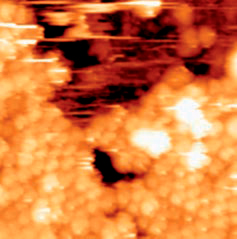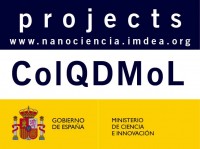ColQDMol Colloidal Semiconducting Quantum Dot Molecules Studied by Scanning Tunneling Spectroscopy and Tunneling Current-Induced Luminescence
Dr. Roberto Otero
-
Funding : Ministerio de Ciencia e Innovación. FIS2012-33011
-
Duration: 2013 - 2015
-
36 months
The aim of this project is to fabricate molecules of colloidal semiconductor quantum dots (QDs) on graphitic surfaces, and the investigation of their electronic and optical properties with a Scanning Tunneling Microscope operated at cryogenic temperatures. Most of the previous

studies on QD molecules have been carried out on epitaxially grown nanostructures. For these systems, the control over the possible
geometries for the quantum dots is limited and they are very sensitive to atmospheric exposure. Colloidal QDs, on the contrary, are much more stable under ambient conditions, due to the surface passivation provided by the organic ligand shell, and their lateral position on a solid surface can be controlled very precisely by means of STM manipulations. While spectroscopy with the STM should give us infor
mation about the change of the electronic levels due to the presence of neighboring QDs, the optical coupling can be studied through the luminescence induced by the tunneling current.
STM image (41 nm x 41 nm, Vt = 3700 mV; It = 10 pA) showing a close-packed array of CdSe
QDs on a HOPG surface





